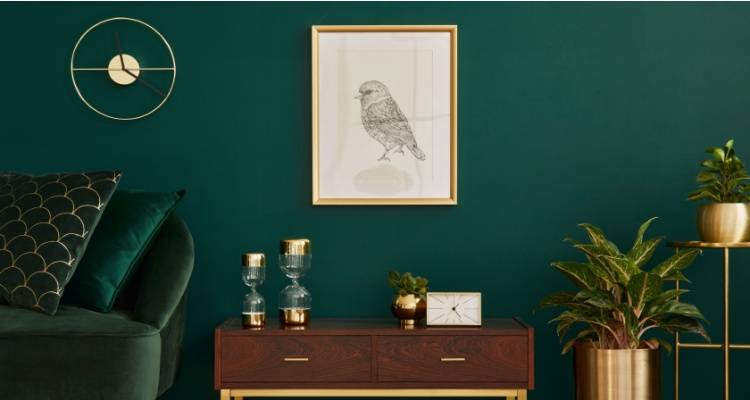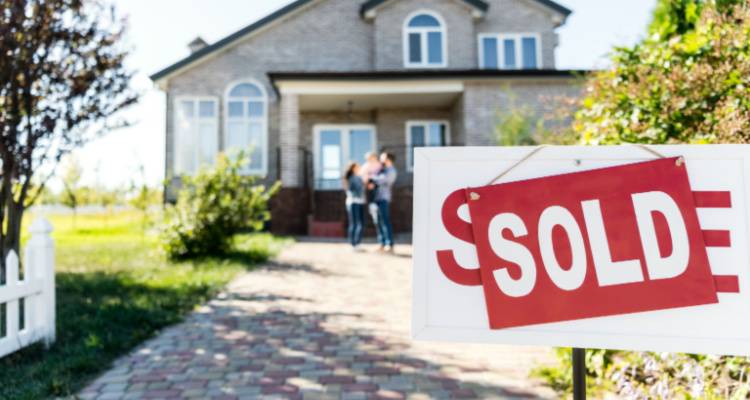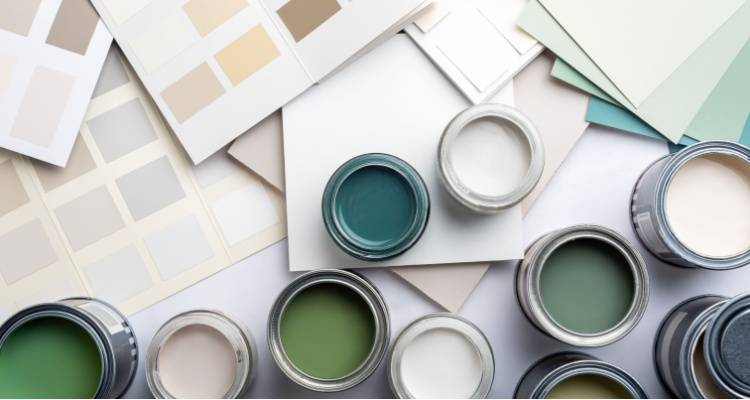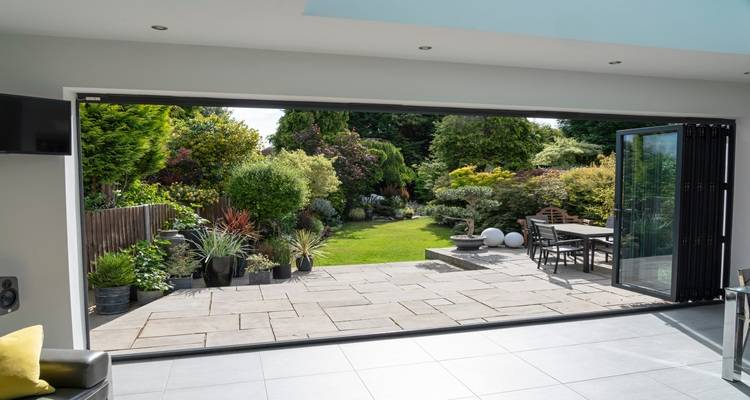From Boring to Bold: Statement Walls That Wow
Interior design doesn't always require costly and expansive renovations - sometimes, all you need to transform a space is a well-executed statement wall.
These upgrades elevate any room, adding personality and can even change the way an entire space feels. Whether you decide to go with bold and vibrant colours, a striking wallpaper, textured wall panelling and in-built features, a statement wall is a great way of transforming a room without having to redecorate.
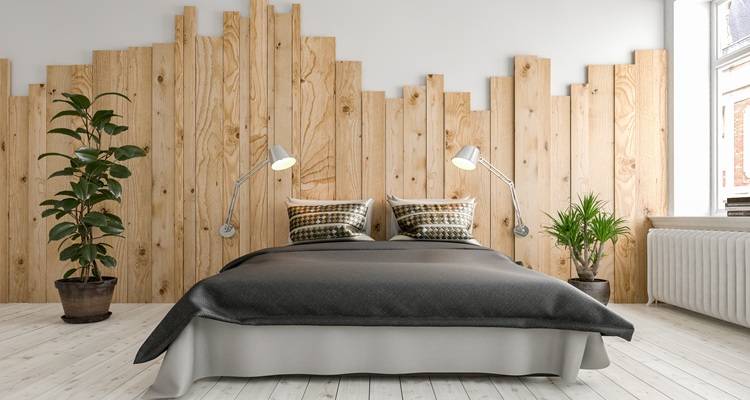
In this guide, we’ll take you through everything you need to know about statement walls, how to make them the star of the show, and what elements can be completed as a DIY project. We’ll also break down the costs of turning a dull and plain room into a dramatic and stylish extension of yourself.
Why Choose a Statement Wall?
Statement walls, most notably also called feature walls, are a very powerful interior design tool. They allow you to dictate where the attention goes in a room by highlighting architectural features or by introducing a bold pattern or hue that would feel overwhelming if utilised for the entire space.
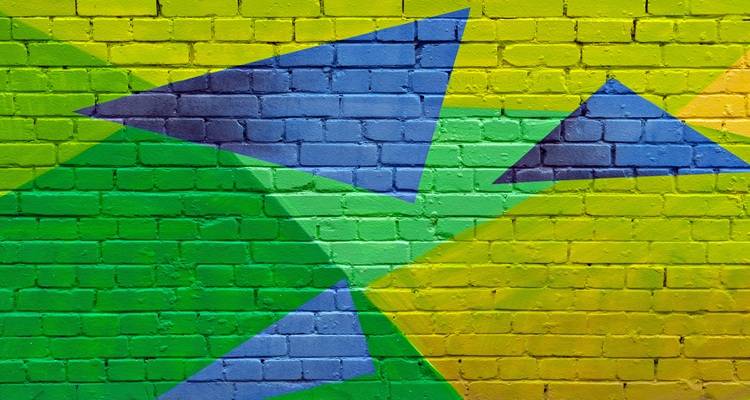
They’re also a great way to refresh your home without massive costs or full room renovations.
The beauty of a statement wall lies in its flexibility. You can choose to go big and bold, or subtle and stylish, and whether you want to create a cosy focal point in a bedroom or add some drama to your hallway or living room, there’s a solution to suit every space, taste, and budget.
Bold Paint Choices That Pop
One of the most cost-effective and easiest ways to create a statement wall is with simple paint, and a bold splash of colour on the walls goes a long way in energising and livening the space up. Rich, dramatic tones like deep navy, forest green, burnt orange or charcoal grey work brilliantly on a single wall, especially when contrasted with lighter shades elsewhere in the room.
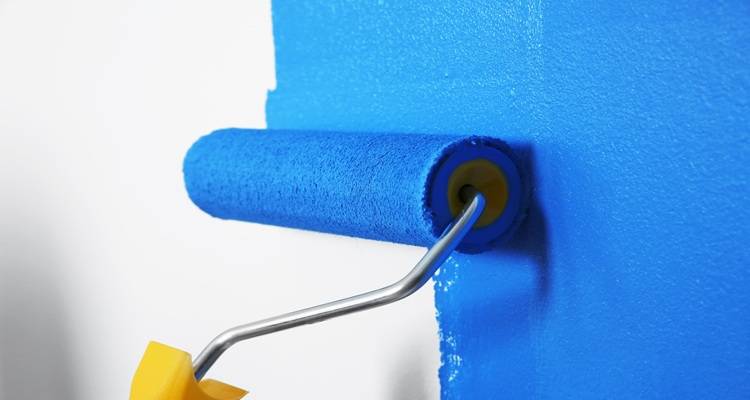
For a more modern look, you can look to try a contrasting colour behind a bed or sofa, or even use paint to frame a fireplace or built-in shelving. Alternatively, opt for colour blocking or geometric shapes for a playful, artistic effect, and vertical or horizontal stripes can also help elongate or widen a room visually.
Painting a feature wall yourself is relatively affordable and incredibly easy, with paint and supplies typically costing between £40 and £100. Hiring a professional painter to achieve crisp lines and a smooth finish will usually cost between £150 and £300, depending on the size of the wall and the complexity of the design.
Dramatic Wallpaper Designs
Wallpaper, a once forgotten option, has made quite a resurgence in recent years, and is ideal for creating a standout wall sure to stun. The resurgence is probably down to the huge range of modern options that are now available on the market, from tropical prints, vintage florals, industrial brick effects, art deco geometrics, or even panoramic wall murals.
Wallpaper is ideal for areas that require some texture and mood, such as bedroom headboard walls or a stylish dining room backdrop. Choose a bold pattern with a colour palette that ties in with your soft furnishings and accessories, or go for a black and white design for a chic, monochromatic look.
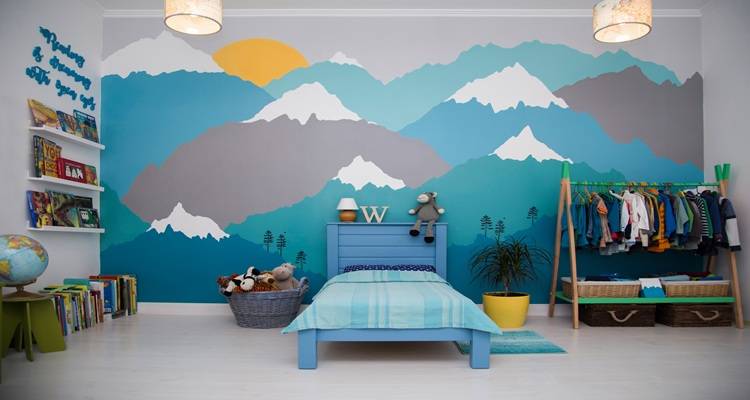
Pricewise, a roll of good quality wallpaper will cost between £20 and £80, depending on the brand and design. For an average-sized wall, you will need between two and four rolls, but bear in mind that if you are lining up patterns, there may be some wastage, so ensure you have enough to finish the job. Professional wallpaper hanging costs around £250 to £500, but DIY installation is possible with a bit of patience, costing under £100 in materials.
or a high-impact finish, consider peel-and-stick wallpaper, which is a removable and renter-friendly option, ideal for experimenting with bold prints or colour. Peel-and-stick options are easy to apply and usually priced between £25 and £60 per roll.
On-Trend Wall Panelling
A very popular trend at the moment is wall panelling, which adds instant depth and texture to any room. Whether you opt for traditional shaker-style panels, modern slatted wood, or even a 3D geometric effect, panelling turns an ordinary wall into an architectural feature.
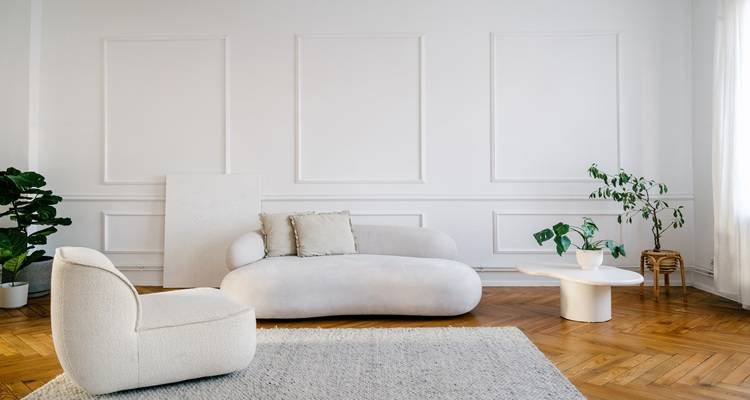
Panelling is very effective method of creating a statement wall in places like hallways, bedrooms and living rooms, and often works well when painted in deep colours like navy, charcoal or sage green for a cosy, heritage-inspired look. In modern homes, vertical wooden slats or ribbed panels can bring in natural texture and a Scandinavian feel.
DIY MDF panelling kits are widely available and cost between £100 and £300 depending on the size of the wall, or if you’d rather leave it to the experts, professional carpenters typically charge between £200 and £600 for installation. Don’t forget to factor in additional costs for painting, which could add another £100–£300 depending on the finish.
Built-In Shelving and Architectural Features
Statement walls don’t need to be flat and lacking in depth. In fact, the incorporation of a built in feature to the wall, like shelving or a media wall, is one of the most effective ways of creating a statement or feature wall. Custom built shelves provide a stylish and practical solution for displaying books, art and flows, while a fireplace built into the wall quickly becomes the key focal point.
You should also consider the incorporation of a media wall, which would usually house a TV, and whatever media devices you have, such as games consoles or media players. Coupled with shelving and/or a fireplace, this is an incredibly effective way of transforming your space.
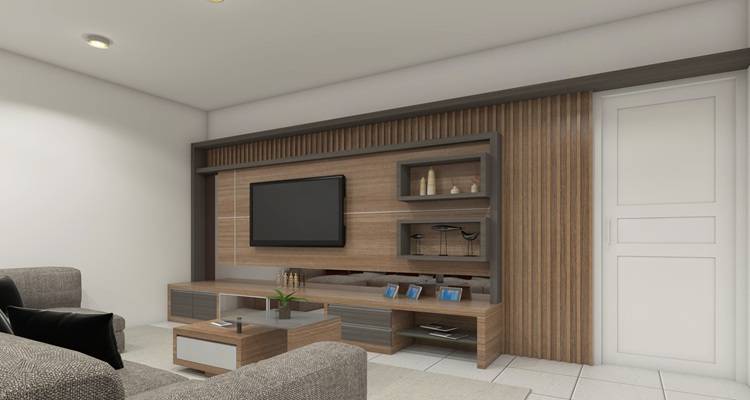
In open-plan homes, a feature wall can also help define zones, such as separating a dining area from a living space. Using cabinetry or fitted storage with a bold backdrop colour can make the space feel considered and cohesive.
Built-in shelves or alcove units cost between £500 and £1,500 depending on size, design and materials. Adding decorative trims, uplighting or bespoke joinery will increase the cost, but the result is a unique, high-end finish that adds both function and value to your home.
Brick, Stone and Faux Finishes
If you are looking for a more rustic look to your interior, exposed brick and stone-effect walls are the perfect way to add that visual shade and texture. If you’re lucky enough to already boast original brickwork, it can be cleaned and sealed to create a stunning and natural finish.
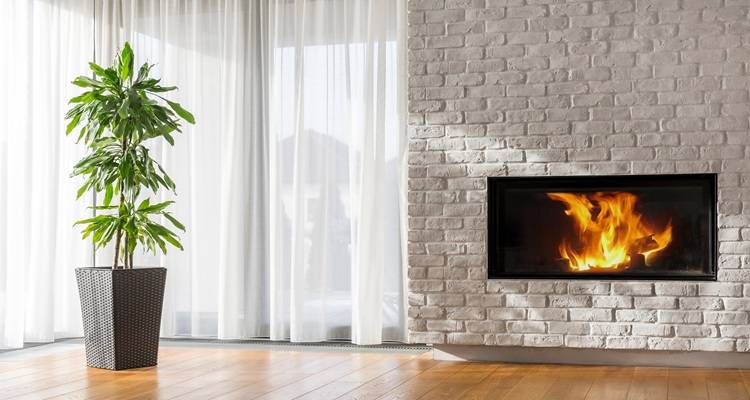
If you are not lucky enough to have exposed brickwork, brick slips (thin tiles made from real brick) offer a practical and convincing alternative way to achieve the look. Stone-effect cladding and faux concrete finishes can also give your room a modern edge and work well in contemporary kitchens, bathrooms and open-plan living spaces.
Brick slips cost between £30 and £60 per square metre, plus installation, which can range from £300 to £800 depending on wall size. For faux finishes like concrete render or Venetian plaster, expect to pay from £40 to £100 per square metre when done professionally.
Statement Tile Walls
People often forget that tiling isn’t reserved for bathrooms and kitchens, and when used creatively, it can make a stunning statement in a living room or even a bedroom. Large spanning porcelain tiles, mosaic-like compilations and cement tiles can be used to create a striking feature wall behind headboards, fireplaces and cosy reading nooks.
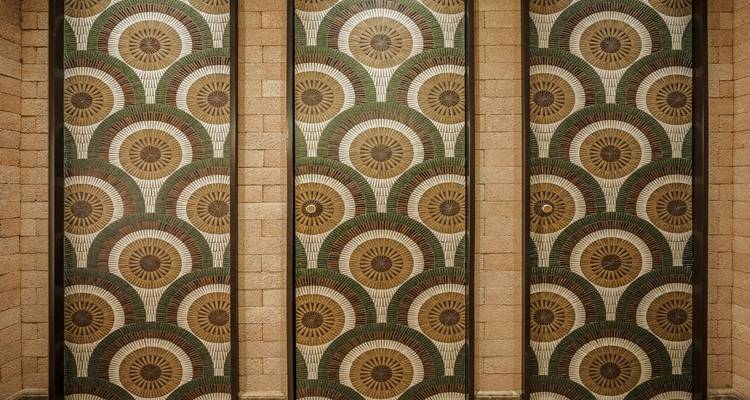
In kitchens, a floor-to-ceiling tiled backsplash in a bold colour or pattern makes an instant impact, while in bathrooms, consider tiling one feature wall with patterned, textured or coloured tiles to add interest. Tiles vary hugely in cost, from budget-friendly options at £10 per square metre to designer tiles at £100+. Installation by a tiler typically ranges from £30 to £60 per square metre, and for a job like this, you will want to enlist the help of a professional.
Decorative Paint Effects
If you’re looking for something particularly unique, you could consider the use of decorative paint techniques to add dimension to your statement wall. Techniques like ombré fading, sponge or rag rolling, or limewashing can give walls a handcrafted, textured feel, and you could even paint your own mural or pattern using stencils for a playful, personal touch.

Limewashing is a particularly modern and ‘on-trend’ option, offering a soft, chalky finish that works beautifully with neutral, rustic, or Mediterranean-inspired interiors. Not only that, but it is achievable with specialist limewash paints and a wide-bristle brush and costs roughly the same as regular painting if you’re DIY-ing it, so it needn’t sound like a job too much.
For a professional decorative painter or muralist, prices start at around £200 and can reach upwards of £1,000 depending on the design and scale.
Accent with Colour and Lighting
You should always bear in mind that a statement or feature wall works best when it is framed and complemented by the rest of your home and the room it is in. Once you have made a decision on the type of feature wall you want to create, think about how you will bring the rest of your decor in to work with things like lighting and furniture.
Wall-mounted lights or picture lamps draw the eye and enhance colour and texture, while a well-placed mirror can bounce light around the space and make it feel bigger.
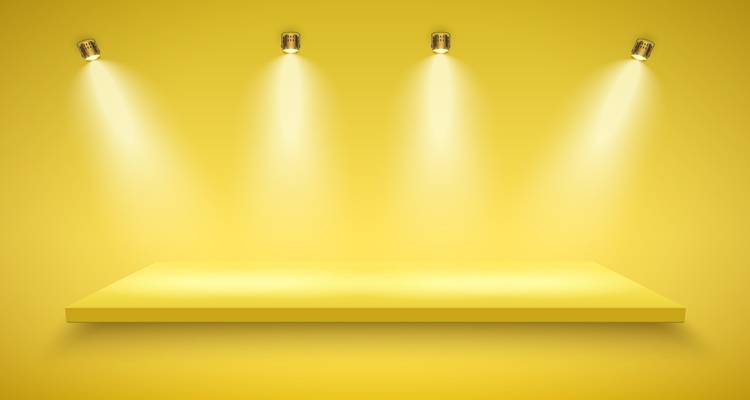
You should try to keep the furniture aspect of the design simple to avoid there being too much in the room vying for attention, which can become overwhelming and create clashes. Cushions, throws, and decorative accessories can be chosen to match or contrast the colours in your wall for a cohesive look.
Wall lighting installation costs around £75 to £150 per fixture, depending on wiring and placement. Adding a plug-in picture light is a budget-friendly alternative and costs from £30.
What to Consider Before You Start
Before taking the plunge into designing your statement wall, take a little time to consider the proportions of the room. As a general rule of thumb, feature walls tend to work best on walls without windows or doors, or behind a key piece of furniture like a bed, sofa or dining table. If your room is already busy with patterns or colours, a simpler statement wall might be the right balance.
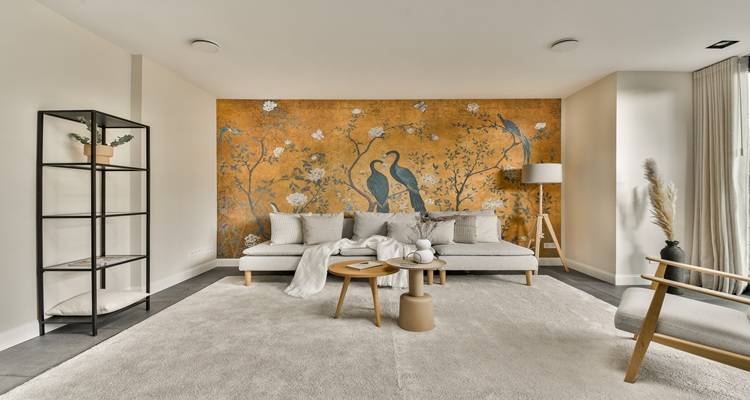
Also, think about the longevity of your design. While bold designs are fun, it’s worth asking yourself whether you’ll still love it in a year or two. OF course, if you’re nervous about committing, try peel-and-stick wallpaper or a bold paint colour that can be easily changed later.
Creating a statement or feature wall is one of the quickest, most cost-effective and most impactful ways of refreshing a space to inject a new life into it. Whether you go down the route of bold paint, vibrant wallpaper or textured panelling, a standout feature wall will help you to create a personality for your home.
Last updated by MyJobQuote on 29th July 2025.

